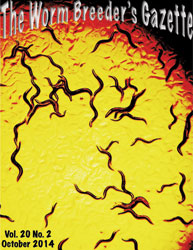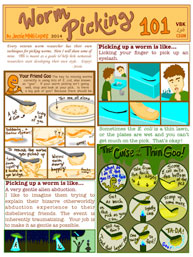Diets rich in omega-3 fatty acids are associated with health benefits in humans. C. elegans can synthesize all polyunsaturated fatty acids de novo and thus serves as an excellent genetic system for the determining the fundamental roles of these fatty acids in development and physiology. De novo synthesis of omega-3 fatty acids in C. elegans requires the activities of a delta-12 desaturase (FAT-2) and an omega-3 desaturase FAT-1, both of which are desaturases that are not present in humans or other mammals (Watts and Browse, 2002). The RB969 strain contains the ok873 allele, which was reported to contain a 1224 base pair deletion of DNA within the fat-2 gene. We performed gas chromatography analysis to determine the fatty acid composition of the RB969 strain. Based on previous analysis of the fat-2(wa17) allele, we expected to observe a loss of 20-carbon polyunsaturated fatty acids (PUFAs). However, we were surprised to find that the RB969 strain contained a higher abundance of PUFAs than wild type, with an increased abundance of omega-3 (n-3) PUFAs (Table 1). PCR analysis of the RB969 strain showed amplification of the expected deletion product, but also amplification of larger bands, including one corresponding to the wild type fat-2 gene. After backcrossing the strain 8 times, we were unable to obtain segregants that contained only the wild type or only the fat-2 deletion PCR products. Therefore, we hypothesized that in addition to a deletion of genomic DNA in the fat-2 gene, this genomic region may have undergone a duplication event, such that both copies of chromosome IV in RB969 worms contained a wild type as well as a deleted version of the fat-2 gene.
To examine whether a genomic duplication in the fat-2 gene region occurred, we performed quantitative PCR on genomic DNA corresponding to genes in the fat-2 region of chromosome IV. We found three times more PCR amplification in three genes in the fat-2 genomic region, including fat-1. Using primers nested within the proposed fat-2 deletion region, we found two times more PCR amplification in the fat-2 gene than in flanking genes, such as csn-6 and pqn-74 (Figure 1). The apparent triplication of the DNA in this region, together with a duplication of the fat-2 gene, is consistent with a deletion in one copy of fat-2, but with two fat-2 copies remaining intact. The triplication of the fat-1 gene is consistent with our observation of increased omega-3 fatty acids, which are indicative of increased activity of the FAT-1 omega-3 desaturase. Thus, we conclude that the RB969 strain carrying the fat-2(ok873) allele should not be considered a fat-2 deletion strain, but instead serves as a fat-1/fat-2 over-expressing strain.
To investigate the biological roles of omega-3 fatty acids in C. elegans, we examined the physiological effects of altered levels of omega-3 fatty acids in C. elegans using the RB969 (high omega-3) strain, in comparison to wild type and to the fat-1 mutant (which lacks omega-3 fatty acids, Table 1). We found no difference between RB969 and wild type with respect to growth, movement, brood size, lifespan and survival when exposed to heat stress (35 °C), cold stress (10 °C) or oxidative stress (paraquat). The fat-1(wa9) mutant strain also shows wild type characteristics, although it is slightly more sensitive to heat or cold stress than wild type and RB969. Our analysis of mutants with altered abundance of omega-3 fatty acids demonstrates that omega-3 fatty acids are not required for C. elegans grown under standard laboratory conditions.
Table 1. Abundance of 20-carbon PUFAs (% of total fatty acids)
|
20:3(n-6) |
20:4(n-6) |
20:4(n-3) |
20:5(n-3) |
total(n-3) |
|
|
Wild type |
3.2% |
0.9% |
4.1% |
13.1% |
17.2% |
|
RB969 |
2.0% |
ND |
6.8% |
15.8% |
22.6% |
|
7.5% |
15.3% |
ND |
ND |
0% |
|
|
ND |
ND |
ND |
1.9% |
1.9% |
ND = not detected
Figures
References
Watts JL, Browse J. (2002) Genetic dissection of polyunsaturated fatty acid synthesis in Caenorhabditis elegans. Proc Natl Acad Sci U S A 99, 5854-5859. 





